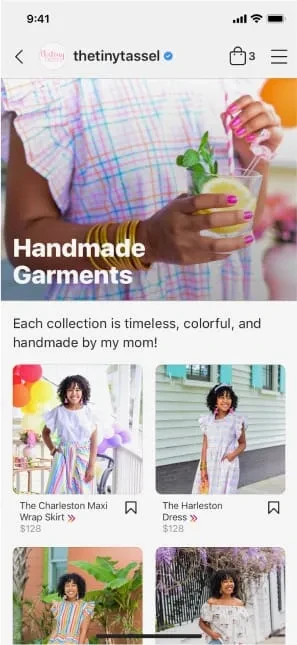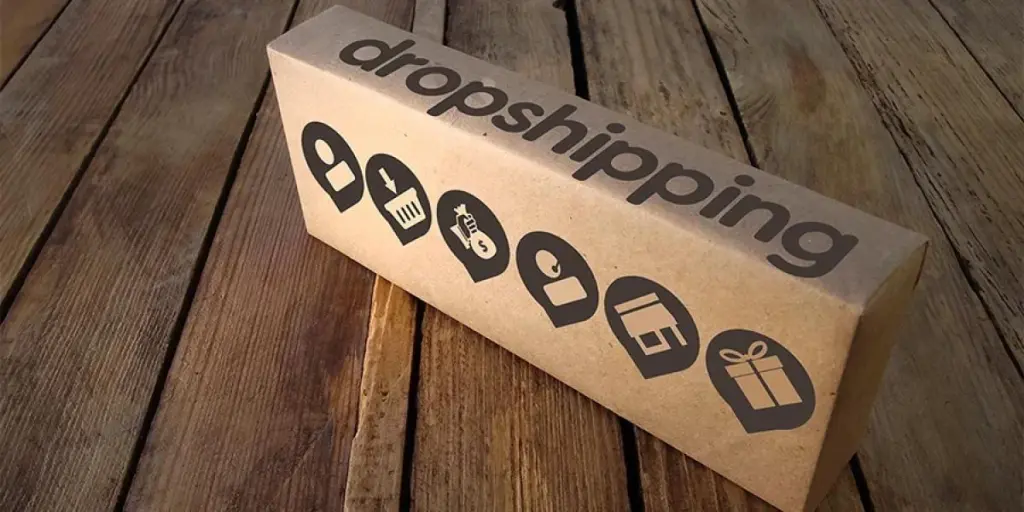When it comes to social media, there’s no denying that it’s become a huge part of our lives. According to a study by Statista regarding social media platforms and user-generated content, the average internet user spends 147 minutes per day on social platforms.
That’s nearly 2 and a half hours each day—more time than we spend eating! Social media has had a major impact on how we shop. It’s no longer necessary to go to physical stores or even browse through a catalog when we can find the perfect item on Facebook, Instagram, or TickTock.
In fact, 2 out of every 3 shoppers purchase their products through social networks. In addition, 26% of Facebook users have made a purchase based on an ad they clicked on the platform. And why shouldn’t they? Social media provides a free platform where customers can share their experiences with products and services—whether they’re positive or negative—and get real opinions from real people who have already tried out what they’re buying.
With these kinds of statistics, it’s no wonder that eCommerce businesses everywhere are scrambling to get their social media pages up and running so they can take advantage of this shift from in-store shopping to social commerce. But building an online presence on social platforms is only the beginning—brands also need to know what social commerce trends are coming down the pike so they can capitalize on them to drive sales.
To help businesses stay on top of their eCommerce game in this rapidly changing environment, this blog identifies 8 emerging social commerce trends that will impact how brands sell to consumers in 2023. So without further ado, let’s get started!
Table of Contents
8 trends that will revolutionize social commerce in 2023
Capitalize on social commerce trends with customization
8 trends that will revolutionize social commerce in 2023
In 2023, the social commerce landscape will continue to advance significantly. Here are eight social commerce trends that are going to change the way businesses interact with customers in online and virtual spaces.
Shoppable Instagram posts
With shoppable Instagram posts, eCommerce brands and entrepreneurs can connect their products to images, videos, carousels, and more on their social posts. This means that when users see their posts and touch the product they want to buy, they’ll be able to check product details or even purchase it with just one mouse tap—without leaving the app!
This concept of “shoppability” will help businesses increase sales by making it easy for customers to find their products within their feeds and purchase them with a single in-app checkout. The beauty of shoppable Instagram posts is that they’re very easy to create! Businesses don’t have to be tech genii or designers—they can simply use the built-in tools on Instagram to easily add product details like price and description to their social posts.
Instagram shops
With more than 200 million users visiting at least one business profile each day and 70% of shoppers turning to Instagram for product discovery, it’s clear that the platform is a gold mine of potential customers. Not only can brands post their product descriptions as shoppable media content, but they can also create in-app visual storefronts to help entice customers to make purchases.
An Instagram shop is a full-screen canvas for browsing product catalogs and making purchases directly from the app. This creates a frictionless experience for consumers, as they don’t have to switch between tabs or close out of one app and open up another; everything is in one place!
It also reduces clutter on their feed because there’s no longer a need for users to go back out into their newsfeed every time they want something new from brands—they can just head right over to the storefront of their preferred brand.

Facebook shops
Although many social media platforms have risen to prominence, Facebook is still the king of social networks. With nearly 3 billion active users, it’s no surprise that brands are flocking to this social platform to grow their audience, build brand awareness, and increase sales.
Like Instagram, Facebook also allows brands to create and launch online stores within the app. These Facebook shops let businesses customize the look and feel of their in-app store by choosing personalized colors, fonts, and even backgrounds. These shops mimic the original brand image and offer social buyers a familiar shopping experience—as if they were shopping on the brand’s website.
Moreover, brands can showcase various products from their inventory and even include user reviews from previous customers. By allowing shoppers to check out quickly and easily from within the Facebook mobile app, businesses can remove any shopping barriers and obstacles that may be keeping people from purchasing a product or service.

Chatbots and conversational apps
Just a few years ago, businesses had to rely on their internal human resources to provide a customer service experience that was both fast and thorough. But with the rise of social commerce, companies are having trouble keeping up with the constant stream of inquiries from clients.
With the emergence of artificial intelligence, businesses can now use automated messaging apps to optimize their customer service on a massive scale, providing instant responses, suggestions, tutorials, and even product recommendations based on past customers’ interests and purchases—at all hours of the day.
Actually, 62% of consumers would prefer to use a conversational chatbot rather than wait on hold for a human agent. This is because chatbots can be programmed with specific guidelines to take care of routine tasks like answering questions about shipping rates, order status updates, etc., while human agents are better equipped at handling more complex issues like product returns or refund requests.
User-generated content (UGC)
Let’s face it: there’s no shortage of opinions on the internet. Everyone seems to be an expert on something, right? And when it comes to our favorite brands, we’re not shy about sharing our opinions with the world.
User-generated content (UGC) is marketing gold for eCommerce companies—it’s a way to turn customers into advocates who are eager to share their personal experience with the brand and its products on their social media feeds.
UGC is becoming an essential part of any business’s social commerce strategy because it helps them build relationships with their customers, improve customer retention rates, and increase sales through word-of-mouth advertising.
A study published by the ANNEX CLOUD found that consumers are 60% more likely to buy from a brand that features user-generated content. The same study demonstrated that user-generated content increases conversion rates by 161%.
While there are many different types of UGC, including reviews and ratings, photos and videos are among the most effective forms of UGC for boosting sales. Here are a few ideas for getting existing customers to talk about their positive experiences with the brand’s products:
- Make sharing easy. Add a few relevant hashtags to social media posts. It’s possible to make it part of the brand’s identity;
- Give away free samples so that people can try the products for themselves and then tell others about how great it was;
- Offer prizes for sharing something positive about the brand—maybe an extra discount coupon or free shipping if they get enough retweets on Twitter;
- Host a contest where customers can submit their stories for a chance at winning an award or prize, like a free item or trip.
Collaboration with micro-influencers
Social media influencers have a strong influence on the purchasing decisions of their followers because they are seen as authorities in their fields.
They can create more authentic relationships with their followers by sharing information about themselves and their interests with fans, which builds trust between them and their fans over time.
This explains why brands and established businesses spent nearly US$ 16.4 billion in influencer marketing, in 2022 alone.

But while such influencers have a large fan base, consisting of millions of followers, they are very expensive to work with. For example, if brands want to work with Kim Kardashian on Instagram or Jessica Alba on Facebook, they will have to pay them US$ 800K or more per post. Additionally, macro-influencers tend to have wide and broad audiences that aren’t directly related to the niche of the business.
An effective alternative for small businesses is to collaborate with micro-influencers. A micro-influencer is someone with 10,000 to 50,000 followers on social media. They are often people who are passionate about a certain lifestyle or hobby, and they’re often experts in their field—so they tend to have high engagement rates because their followers identify with them on a more personal level.
Social polls and quizzes
Social polls, surveys, and interactive quizzes are a sentimental way for brands and small businesses to get valuable feedback from their audience. They can collect data on what their customers think about their products, services, and company in general, as well as gain insight into what questions they want to be answered.
Companies need to ask the right questions about their customers’ needs and preferences—and then use that data to better serve those customers. For example, a clothing brand can ask all kinds of questions about the kind of clothes people want, what colors they prefer, and what fabrics they like best—and then create personalized garment recommendations.

Here are some of the benefits of using interactive content as part of the social commerce strategy:
- Boosting audience engagement by encouraging them to interact with the brand, post comments, and share their thoughts;
- Getting real-time feedback to improve products/services based on customer needs;
- Performing market research by identifying potential issues before launching a new product and gauging customer satisfaction.
Adoption of XR experience
Extended reality (XR) is a tech-savvy term referring to all immersive technologies that go beyond what we see and hear. It includes augmented reality (AR), virtual reality (VR), and mixed reality (MR). More than just a fad, XR is becoming mainstream, with global demand expected to rise over $250 billion by 2028, as more and more people are embracing AR/VR apps and gadgets in their daily lives.
This trend has been confirmed by the shift in the core strategies and business models of major social platforms like Facebook and Youtube. For instance, Facebook has transformed into the Metaverse by launching Meta Horizon Worlds, a new social universe where users can create an avatar of themselves, interact with their friends, meet new people, and attend events around the world through virtual reality.

This kind of immersive experience has huge potential for social commerce. According to a study by Swag Soft, implementing virtual reality in marketing can boost online shopping by 17%. That means businesses need to start using XR marketing campaigns to provide users with try-before-you-buy experiences.
For example, a beauty brand can use AR to promote makeup products by making it easy for consumers to see how the colors look on their skin tone or by letting them virtually try on a pair of sunglasses in different lighting conditions—all by simply using their Instagram filters!
Brick-and-mortar vendors can also leverage VR to create an in-store virtual experience. For instance, a home decor store can give customers previews of how furniture products would look in their homes before they purchase them. They can even see how different colors would look on their walls.
Capitalize on social commerce trends with customization
There’s no question that these social commerce trends will continue to reshape the eCommerce landscape. While it’s tempting to jump in and establish an online presence on every social platform out there, brands need to take a step back and figure out what works best for them.
There is no one-size-fits-all strategy for social commerce. For example, Instagram users are drawn to a brand’s personality and aesthetic; they want to see how a product fits into their lives. Facebook users, on the other hand, prefer a more direct approach; they want brands to provide value and make them feel like part of the community.
This means that the days of mass-produced goods are long gone, and now companies must find new ways to create a unique brand identity through product customization. Today’s consumers want to feel like they are part of the design process of their preferred products—not just another anonymous social buyer purchasing from a faceless brand!

Luckily for brands, Chovm.com boasts an extensive database of leading manufacturers who offer OEM and ODM services with low minimum order quantities (MOQ)—from clothing to electronics to automotive parts. With 3D printing and laser cutting capabilities, these manufacturers can help small businesses customize one-of-a-kind pieces. Get started by requesting customizable samples today!




